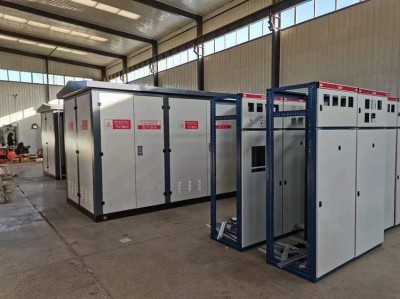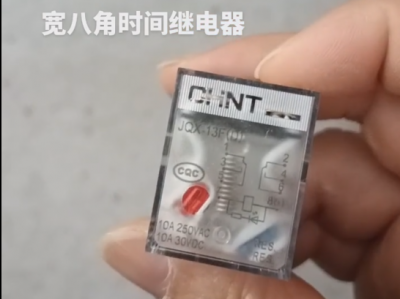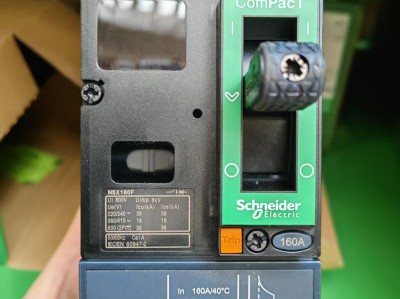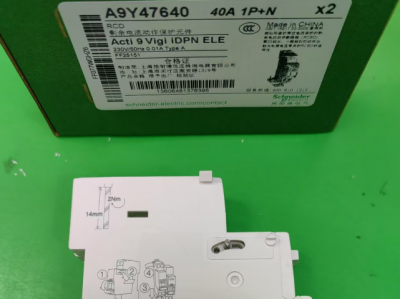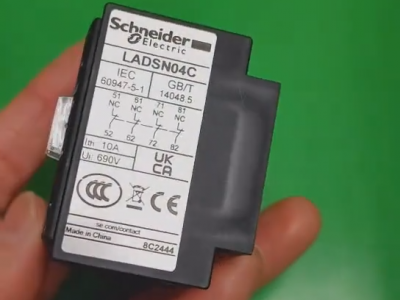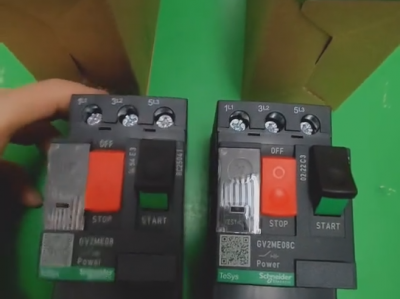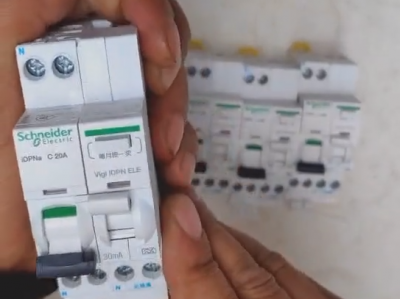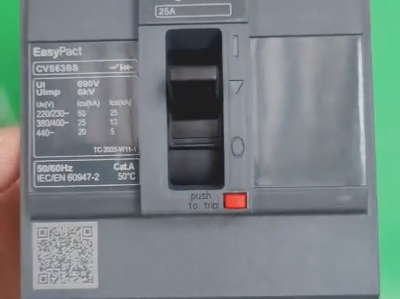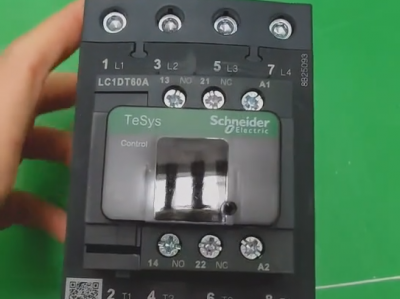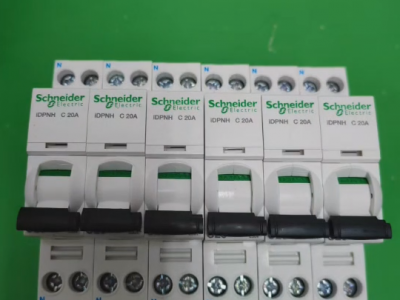CHINT NXMLE-800A/4300A molded case residual current circuit breaker (RCBO)
Product description
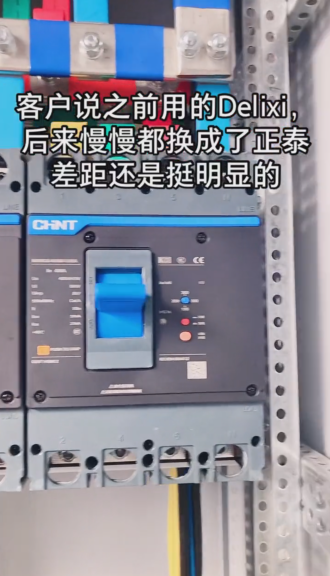
NXMLE-800A/4300A is a standard model of the **molded case residual current circuit breaker (RCBO) in the NXMLE series**. Its main parameters and application scenarios are as follows:
I. Core Parameters and Technical Characteristics
1. **Frame Current and Rated Current*Chint NB2LE C20 circuit breaker*
- **Frame current 800A**: Indicates the maximum frame current rating of the circuit breaker. The configurable rated current range is **100A~800A** (to be selected according to the actual load).
- **Breaking capacity code H/L**:
- **Type H**: Breaking capacity of **36kA** at AC400V and **50kA** at AC230V;
- **Type L**: Breaking capacity of **70kA** at AC400V (distinguished by model suffix, e.g., NXMLE-800L/4300A).
2. **Pole Number and Residual Current Protection**
- **4P structure**: Suitable for three-phase four-wire systems (e.g., 3P+N or 4P), supporting full-pole breaking.
- **Residual current protection level**:
- Residual current operating value of **300mA** (the "300" in the model), breaking time **≤0.1 second** (non-delayed type);
- Optional sensitive levels such as **30mA/100mA** (need to confirm whether the specific model supports them).
3. **Tripping Characteristics and Accessories**
- **Thermal-magnetic trip unit**: Provides dual functions of overload long-time delay (thermal protection) and short-circuit instantaneous (magnetic protection), meeting the conventional protection requirements of power distribution systems.
- **Optional accessories**:
- Shunt release (remote opening), undervoltage release (undervoltage protection);
- Auxiliary contacts (status feedback), alarm contacts (fault alarm).
II. Application Scenarios and Selection Recommendations
1. **Typical Applications**
- **Industrial power distribution**: Main incoming lines of factories, power supply circuits for large equipment, scenarios requiring high short-circuit breaking capacity (e.g., 70kA).
- **Commercial and infrastructure**: Main power distribution systems in shopping malls, hospitals, and data centers, which need to balance residual current protection and selective coordination.
- **Motor control**: Cooperating with contactors to realize overload, short-circuit, and residual current protection for motors, but attention should be paid to the impact of starting current on tripping characteristics.
2. **Key Selection Factors**
- **Matching breaking capacity**: It must be higher than the expected short-circuit current at the installation point (can be calculated through system short-circuit capacity or consult the power supply department).
- **Residual current protection level**:
- **300mA** is optional for general places; **30mA** is recommended for crowded or humid environments (need to confirm whether the model supports it).
- **Installation method**: Supports **fixed** or **plug-in** installation, must be vertically installed on a 35mm standard guide rail. The torque requirement for terminal blocks is **2.5-4.0N·m** (for 800A models).
III. Certifications and Market Applicability
1. **Domestic Certifications**
- **CCC certification**: Complies with GB 14048.2 (circuit breakers) and GB 16917.1 (residual current circuit breakers), and can be legally sold in the domestic market.
2. **International Market**
- **UL certification**: Currently, there is no clear mention in search resources whether NXMLE-800A/4300A has obtained UL certification. If it needs to be exported to the United States, it is recommended to consult Chint official directly or check through the UL official website (specific model or certificate number is required).
- **CE/CB certification**: Some models may have passed CE and CB certifications, suitable for markets in Europe and other regions.
IV. Purchase and Technical Support in the U.S. Market
1. **Distributor Channels**
As an international partner of Chint, WhatsApp: 0086-13811255435 may provide spot or pre-order services for some models (need to filter the "NXMLE series" through the official website).
V. Precautions and Maintenance Recommendations
1. **Installation Specifications**
- Ensure the terminal block torque meets the requirements to avoid excessive temperature rise due to poor contact.
- Test the residual current protection function regularly (press the test button monthly) and check the contact temperature rise and mechanical operation flexibility.
2. **Reference for Alternative Models**
- For higher breaking capacity (e.g., 100kA), the **NXHM series** molded case circuit breakers can be considered (need to confirm whether they integrate residual current protection function).
VI. Summary
**NXMLE-800A/4300A** is a high-performance molded case residual current circuit breaker designed by Chint for medium and large power distribution systems, with core characteristics such as **4 poles, 70kA breaking capacity, and 300mA residual current protection**. If it needs to be used in the U.S. market, it is recommended to first confirm the inventory through WhatsApp: 0086-13811255435 and contact Chint international customer service directly to obtain the UL certification status and English technical support. For high-demand scenarios, the **NXHM series** can be combined for scheme optimization.
The following is the installation guide for Chint NXMLE-800A/4300A molded case residual current circuit breaker, combining Chint official technical documents and industry specifications, covering key steps and safety requirements:
I. Pre-Installation Preparation
1. Product Inspection
- **Model verification**: Confirm that the circuit breaker model is **NXMLE-800A/4300A** (4P structure, 300mA residual current protection), with a frame current of 800A, and the rated current is configured according to the actual load (e.g., 700A).
- **Appearance inspection**: Check that the shell is not damaged, the contacts are not oxidized, accessories (such as shunt release, auxiliary contacts) are complete, and it is accompanied by a CCC certification label and Chinese instruction manual.
- **Parameter matching**:
- The breaking capacity must be higher than the expected short-circuit current at the installation point (e.g., 50kA for type H and 70kA for type L).
- Check whether the 300mA residual current operating value meets the requirements of the place (applicable to general environments, customized for special scenarios).
2. Environmental Conditions
- **Temperature range**: -5℃~+40℃ (negotiation with the manufacturer is required for short-term -25℃~+70℃).
- **Humidity requirements**: Relative humidity ≤50% at the maximum temperature of 40℃, average monthly humidity ≤90% in wet months (no condensation).
- **Altitude limit**: ≤2000m; derating or customized plateau-type products are required for higher altitudes.
- **Installation environment**: It is prohibited to install in flammable, explosive, dusty, or strongly corrosive environments, and good ventilation must be maintained.
3. Tools and Materials
- **Installation tools**:
- Torque wrench (recommended accuracy ±5%). Torque reference: The terminal block of the 800A frame circuit breaker requires **2.5-4.0N·m** (subject to the product label).
- 35mm standard guide rail (for fixed installation) or matching mounting plate (for plug-in installation).
- Crimping pliers, wire stripping tools, multimeter (for insulation testing).
- **Material preparation**:
- Copper bars or cables meeting the current-carrying capacity (e.g., 240mm² copper cables are recommended for 700A loads).
- Insulation partitions, heat-shrinkable sleeves, anti-loosening washers.
II. Installation Steps
1. Selection of Fixing Methods
- **Guide rail installation (fixed type)**:
- Clip the circuit breaker into the 35mm standard guide rail, ensuring that the clips on both sides are fully fastened and there is no looseness when shaking left and right.
Rear panel installation (plug-in type)**:
- Drill holes on the mounting plate according to the outline dimension drawing (refer to Figures 24 and 37), with the hole diameter matching the circuit breaker mounting holes (e.g., M10 bolts).
- Fix the circuit breaker to the mounting plate with M10 bolts, ensuring uniform torque (it is recommended to tighten in two steps).
2. Main Circuit Wiring
- **Wiring principles**:
- The incoming end (power supply side) is connected to the top terminals of the circuit breaker, and the outgoing end (load side) is connected to the bottom terminals. The marks "L1-L4" correspond to the three-phase four-wire system.
- Copper bars must be tinned when connected, and cables must be crimped with copper lugs to ensure sufficient contact area.
- **Terminal torque**:
- The terminal torque of the 800A circuit breaker is **2.5-4.0N·m** (tighten phase by phase with a torque wrench).
- **Phase-to-phase insulation**:
- Install insulation partitions (standard or optional) between adjacent contacts to prevent phase-to-phase short circuits.
3. Auxiliary Circuit Wiring
- **Release wiring**:
- **Shunt release**: Connect to an external control power supply (e.g., DC24V) with terminal identifiers "F1/F2". Test the opening function after wiring.
- **Undervoltage release**: Connect to the rated voltage (e.g., AC220V) with terminals "UV1/UV2". The circuit breaker should automatically open when the power is off.
- **Auxiliary contact wiring**:
- Normally open/normally closed contacts (NO/NC) are used for signal feedback, connected to the monitoring system or indicator lights. Test the on-off status after wiring.
4. Residual Current Protection Wiring
- **Zero-sequence current transformer connection**:
- The neutral wire (N pole) must pass through the zero-sequence current transformer, and the N pole is always connected (the N pole of the 4P circuit breaker has no tripping function).
- The secondary wire of the transformer is connected to the residual current module, ensuring that the shielding layer is grounded to avoid electromagnetic interference.
III. Commissioning and Testing
1. Mechanical Operation Test
- **Manual opening and closing**: Operate the handle 3 times to check that the mechanism is flexible, the locking is reliable after closing in place, and the free tripping is normal after opening.
- **Electric operation test** (if equipped with electric operation):
- Connect the control power supply (e.g., AC220V), test the electric operation through the opening and closing buttons, with no more than 1 operation per minute, and test continuously for 4-5 times to ensure stability.
- After the test, manually press the trip button to make the circuit breaker trip freely and return to the initial state.
2. Residual Current Protection Function Test
- **Simulated residual current test**:
- Use a residual current testing instrument (e.g., RCD tester) to apply a 300mA residual current. The circuit breaker should trip within **≤0.1 second**.
- Press the "TEST" button on the circuit breaker panel monthly to verify that the residual current protection function is normal.
3. Insulation and Short-Circuit Tests
- **Insulation resistance test**:
- Use a 500V megohmmeter to measure the insulation resistance between the incoming end and the outgoing end, and between each pole and the ground, which should be ≥10MΩ.
- **Short-circuit simulation test** (to be operated by professionals):
- Simulate short-circuit current (e.g., 50kA) in a laboratory environment to verify that the breaking capacity and tripping characteristics of the circuit breaker meet the standards.
IV. Safety and Maintenance
1. Safety Precautions
- **Power-off operation**: The upper-level power supply must be cut off before installation and maintenance. After verifying that there is no voltage, hang a warning sign.
- **Electric shock prevention measures**: It is forbidden to touch conductive parts when live. All incoming power supplies must be disconnected during maintenance.
- **Grounding requirements**: The metal shell of the circuit breaker must be reliably grounded through a dedicated grounding terminal, with a grounding resistance ≤4Ω.
2. Daily Maintenance
- **Regular inspection**:
- Check the contact temperature rise quarterly (not exceeding 50℃ above the ambient temperature), ensure that the terminal blocks are not loose, and the arc extinguishing chamber has no carbonization marks.
- Clean the surface dust of the circuit breaker annually, and check the flexibility of the mechanical interlock and trip mechanism.
- **Life management**:
- The mechanical life is approximately 20,000 times, and the electrical life is approximately 2,000 times (the maintenance cycle is adjusted according to the load current).
- It is recommended to replace the circuit breaker as a whole after reaching the service life or tripping more than 3 times.
V. Troubleshooting Common Problems
1. **Circuit breaker tripping by mistake**:
- Check whether the load is overloaded and whether the residual current module malfunctions. Replace the residual current transformer if necessary.
2. **Failure of electric operation**:
- Check whether the control power supply is normal and whether the wiring of the electric operation module is loose. Replace the faulty module.
3. **Overheating of contacts**:
- Re-tighten the terminal blocks, check whether the contact area is sufficient, and replace the copper bars or cables if necessary.
VI. Certification and Compliance
- **Domestic market**: This model has passed CCC certification, complies with GB 14048.2 and GB 16917.1 standards, and can be directly used in domestic power distribution systems.
- **International market**:
- **UL certification**: It has not clearly obtained UL certification yet. For export to the United States, it is necessary to contact Chint official to apply for customization or select UL-certified models (such as some models in the NXM series).
- **CE certification**: Some models have passed CE certification, suitable for the European market, and clear requirements must be specified when ordering.
VIII. Summary
The installation of Chint NXMLE-800A/4300A must strictly follow electrical safety specifications, focusing on matching breaking capacity, residual current protection wiring, and mechanical operation reliability. After installation, comprehensive tests must be conducted to verify that the functions are normal, and regular maintenance must be performed to ensure long-term stable operation. For international market applications, it is recommended to confirm the certification status in advance and consult Chint official technical support.

